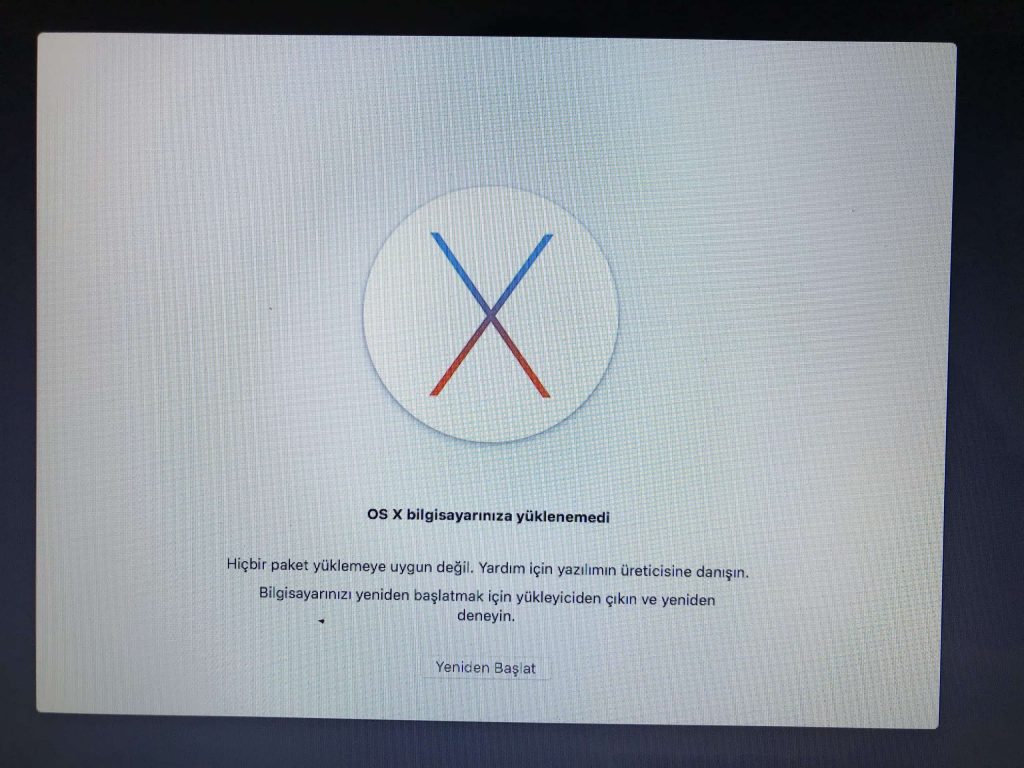OS X could not be installed on your computer.
No packages were eligible for install. Contact the software manufacturer for assistance.
Quit the installer to restart your computer and try again
Even if you did a clean install of El Capitan it would not explain why you are seeing OS X 10.6.8. OS X 10.6.3/4 was the original system on your computer. Still, it’s hard to know where the 10.6.8 came from, unless Time Machine has been disabled or disconnected for the last 8 years or so. It depends on whether your current Mac is able to run the higher OS. If the App Store offers the more recent OS, it is safe to attempt it, as the installer will check the hardware and report back if it cannot handle it, and won’t install. Jun 21, 2016 Installing El Capiton on an old Mac Book Pro today, I received the error: OS X could not be installed on your computer. No packages were eligible for install. Contact the software manufacturer for assistance. Quit the installer to restart your computer and try again. Mar 14, 2016 We have two methods to fix this problems. The first method we are going to try is to scan your Mac hard drive using the Disk Utility, and if it doesn’t work we are going to re-install Mac OS X El Capitan through the Recovery Mode. Let’s get it started! First Method – Disk Utility. Power off your Macbook or iMac completely. Once you’ve done that, here’s how to install, reinstall, or upgrade to El Capitan, step by step: Boot from your Recovery HD partition by restarting your Mac while holding down the Command+R keys. The OS X Utilities window appears. Select Reinstall OS X, and click Continue. The OS X El Capitan splash screen appears.

Oh dear… When trying to install OS X 10.11 (El Capitan) you may encounter this message. This happens because the the installer certificates are no longer valid when checked against the clock of your mac.
Don’t panic though as this is easily fixed using Terminal, so don’t restart immediately.
- Click Utilities on the menu bar
- Select Terminal
- Type date 062112422016
- Exit Terminal
- Click Restart
When you restart the mac and try the installer again it will now believe the certificates are valid and will continue as it should.
Start up from macOS Recovery
Determine whether you're using a Mac with Apple silicon, then follow the appropriate steps:
Apple silicon
Turn on your Mac and continue to press and hold the power button until you see the startup options window. Click the gear icon labeled Options, then click Continue.
Intel processor
Make sure that your Mac has a connection to the internet. Then turn on your Mac and immediately press and hold Command (⌘)-R until you see an Apple logo or other image.
If you're asked to select a user you know the password for, select the user, click Next, then enter their administrator password.
Reinstall macOS
El Capitan Could Not Be Installed On Your Computer Faster
Select Reinstall macOS from the utilities window in macOS Recovery, then click Continue and follow the onscreen instructions.
El Capitan Could Not Be Installed On Your Computer Video
Follow these guidelines during installation:
- If the installer asks to unlock your disk, enter the password you use to log in to your Mac.
- If the installer doesn't see your disk, or it says that it can't install on your computer or volume, you might need to erase your disk first.
- If the installer offers you the choice between installing on Macintosh HD or Macintosh HD - Data, choose Macintosh HD.
- Allow installation to complete without putting your Mac to sleep or closing its lid. Your Mac might restart and show a progress bar several times, and the screen might be empty for minutes at a time.
After installation is complete, your Mac might restart to a setup assistant. If you're selling, trading in, or giving away your Mac, press Command-Q to quit the assistant without completing setup. Then click Shut Down. When the new owner starts up the Mac, they can use their own information to complete setup.
Other macOS installation options
When you install macOS from Recovery, you get the current version of the most recently installed macOS, with some exceptions:
- On an Intel-based Mac: If you use Shift-Option-Command-R during startup, you're offered the macOS that came with your Mac, or the closest version still available. If you use Option-Command-R during startup, in most cases you're offered the latest macOS that is compatible with your Mac. Otherwise you're offered the macOS that came with your Mac, or the closest version still available.
- If the Mac logic board was just replaced, you may be offered only the latest macOS that is compatible with your Mac. If you just erased your entire startup disk, you may be offered only the macOS that came with your Mac, or the closest version still available.
You can also use these methods to install macOS, if the macOS is compatible with your Mac:
- Use the App Store to download and install the latest macOS.
- Use the App Store or a web browser to download and install an earlier macOS.
- Use a USB flash drive or other secondary volume to create a bootable installer.